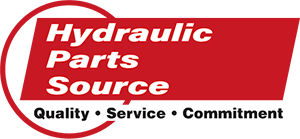Problem Solving Series - System Failure
This is the second of three articles in our “Problem Solving Series,” where we will discuss approaches to identifying & resolving different issues that can plague a hydraulic system.
Diagnosing and fixing issues may take a little bit of troubleshooting, but these tactical efforts are worth it when trying to avoid a hydraulic system failure.
But what troubleshooting measures should be taken if a system failure does occur?
As troubleshooting is the process of systematically solving a problem by actively looking at common, known issues that can occur within the unit, it may seem daunting to problem-solve a whole system failure.
Most Common Causes of Failure
Some of the most common hydraulic system failure modes and their impact upon components are:- Water present in the hydraulic fluid – moisture can enter a hydraulic system via the breather cap on the reservoir, failure of a heat exchanger, or frequent/extended shutdowns of the hydraulic system, causing water to condensate. Sometimes a wash down or Hydraulic fluid will often be milky in color.
- Particulate contamination – typically caused by clogged filters or filters which do not have regular preventative maintenance.*
- Above average hydraulic fluid temperature – typically caused by continuous flow over a relief valve or an improperly sized hydraulic heat exchanger.
- Air in the hydraulic system – pumps will often times cavitate when air is not relieved.
- Worn component seals – typically caused by fatigue within the pump inlet, resulting in reduced performance or extended periods of high temperature.
* Water and particulate contamination often result in transient pressure spikes, blocked or restricted pump inlet, or case drain over pressurization. The net effect is typically premature fatigue and wear on pumps and actuators.
To effectively diagnose the specific hydraulic problem that leads to the failure, we suggest following a tactical approach to:- Identify the specific problem
- Gather information from schematics
- Adjust and verify the diagnosis
- Plan and schedule maintenance
Identifying the Problem
To identify the source of the problem that lead to the failure in the first place, begin by looking at the most likely culprits.These four areas are a good place to start:
- The motor – turn it off and on and check for wiring issues
- The pump – assess temperature, speed, noise level, and parts (specifically the pump shaft, coupling, and filter) for issues that may lead to cavitation
- Fluids – check the level, color, and viscosity (if necessary, drain and replace fluids)
- Valves and lines – look for leaks, tighten connection points, and check relief valve for damage
Gathering Information
After identifying the problem, information-gathering depends on where the issue was found.Regardless, look at hydraulic system schematics (importantly, the schematics diagram), and remove the power supply from the machine.
The best information during this step of troubleshooting often comes while reading and tracing the schematic. Components can be in out-of-the-way places. Follow the lines on the schematic and do a thorough review of how each component should be operating.After getting to know the system, take a systematic approach, listing and inspecting components that could be causing the identified issue.
Adjusting and Verifying
After gathering schematic information, it’s time for action. Depending on what problem was identified, you may need to:- Realign pump shafts, repair van pump issues, or replace hoses
- Set relief valves or lines
- Repair electronics, moving parts, or any functional issues affecting the work of the motor
- Clean and replace hydraulic fluids
Planning Ahead
With all systems a go, you may want to include the problem in a scheduled preventative maintenance program. This program may include:- Investigation of fluid health and appropriate lubrication
- A strategy for adding critical filter locations to trap more particles
- A schedule for fluid and filter changes
- Filter change-out according to pressure differential, adding a pressure gauge or indicator
- Installation of electrical monitoring devices of filter differential pressure or analog transducers to log trends

